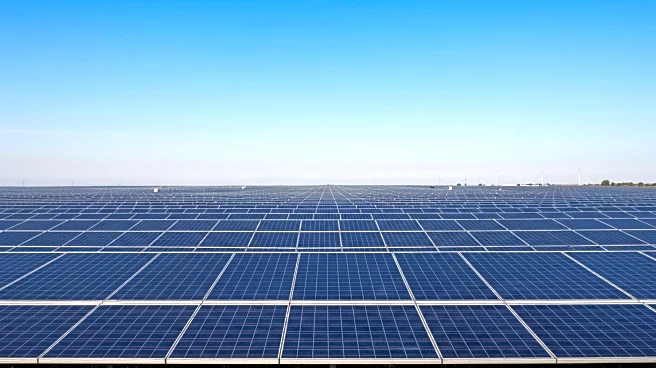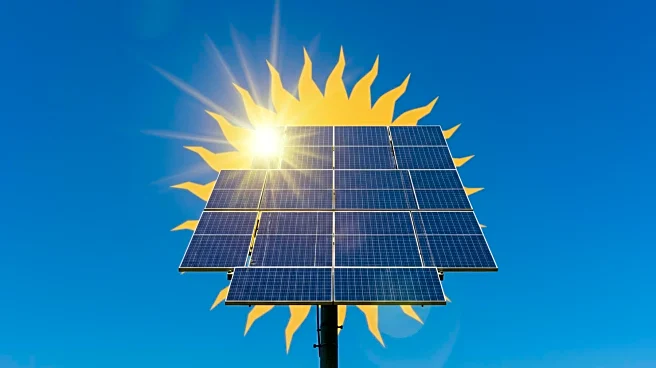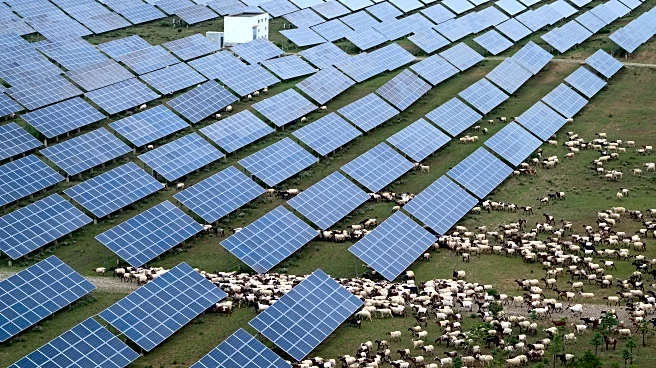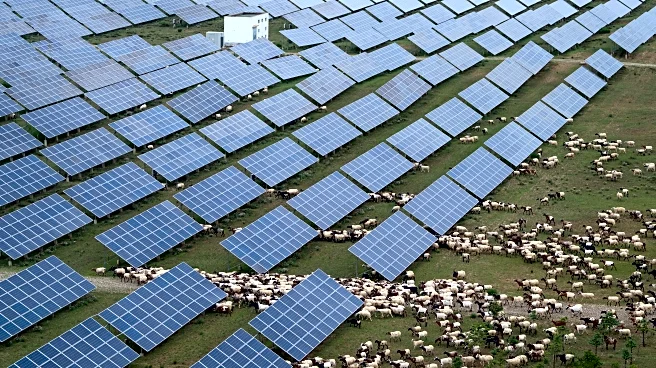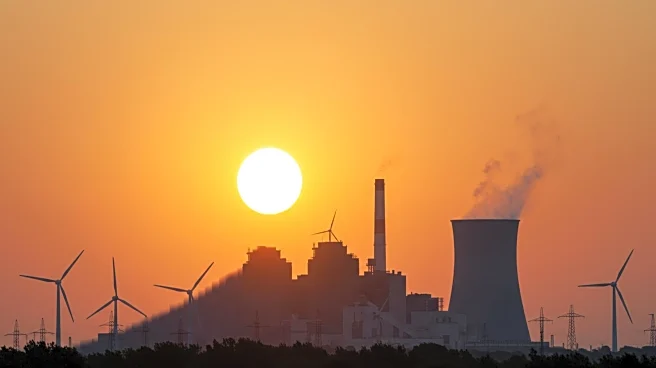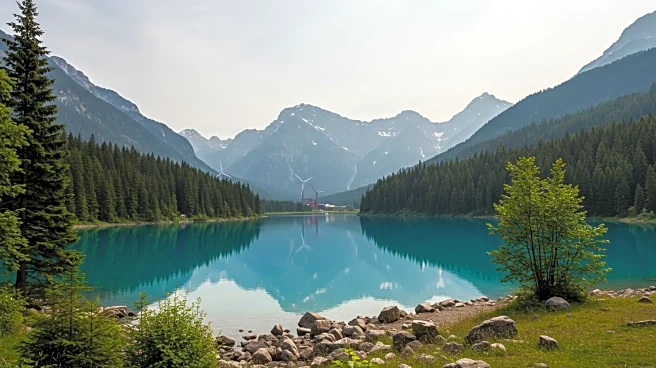What is the story about?
What's Happening?
China is rapidly advancing its solar energy capabilities with the construction of what is expected to be the world's largest solar farm on the Tibetan plateau. Covering 235 square miles, the project aims to generate enough power for 5 million households. The initiative is part of China's efforts to reduce carbon emissions, which have recently shown a decline. The solar farm is designed to integrate ecological benefits, such as reducing dust and supporting vegetation growth, while providing grazing space for sheep.
Why It's Important?
China's ambitious solar farm project is a significant step towards achieving its carbon neutrality goals by 2060. The country's investment in solar energy is contributing to a structural decline in carbon emissions, marking a turning point in global climate change efforts. The project demonstrates that economic growth can be achieved alongside emissions reduction, offering hope for a sustainable future. However, China's reliance on coal remains a challenge, and further efforts are needed to shift towards less resource-intensive sectors.
What's Next?
The solar farm's completion will require the construction of transmission lines to deliver electricity to population centers in China's east. The project faces challenges related to the inflexible management of China's electricity grid, which is tailored to coal plants. Policymakers are working to address these issues, requiring changes to coal-fired power plant operations and the transmission network. The successful integration of solar energy into the grid will be crucial for maximizing the project's impact.
Beyond the Headlines
China's solar farm project highlights the potential for renewable energy to transform landscapes and economies. The integration of ecological benefits, such as supporting vegetation growth, demonstrates the multifaceted advantages of solar energy. The project also underscores the importance of infrastructure development in achieving energy goals. As China continues to invest in renewable energy, it sets an example for other countries to follow, potentially influencing global energy policies and practices.
AI Generated Content
Do you find this article useful?
